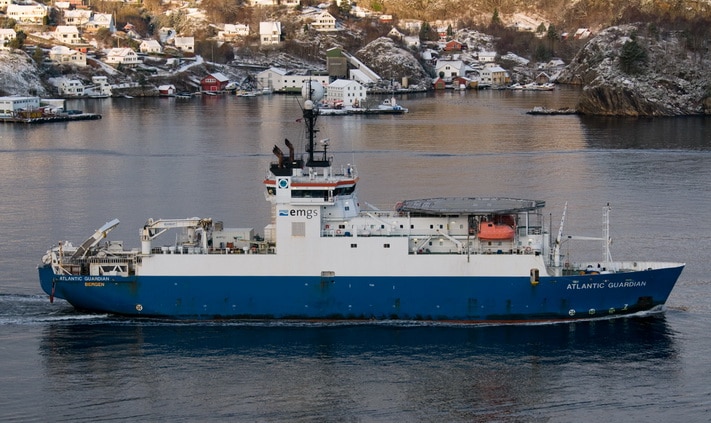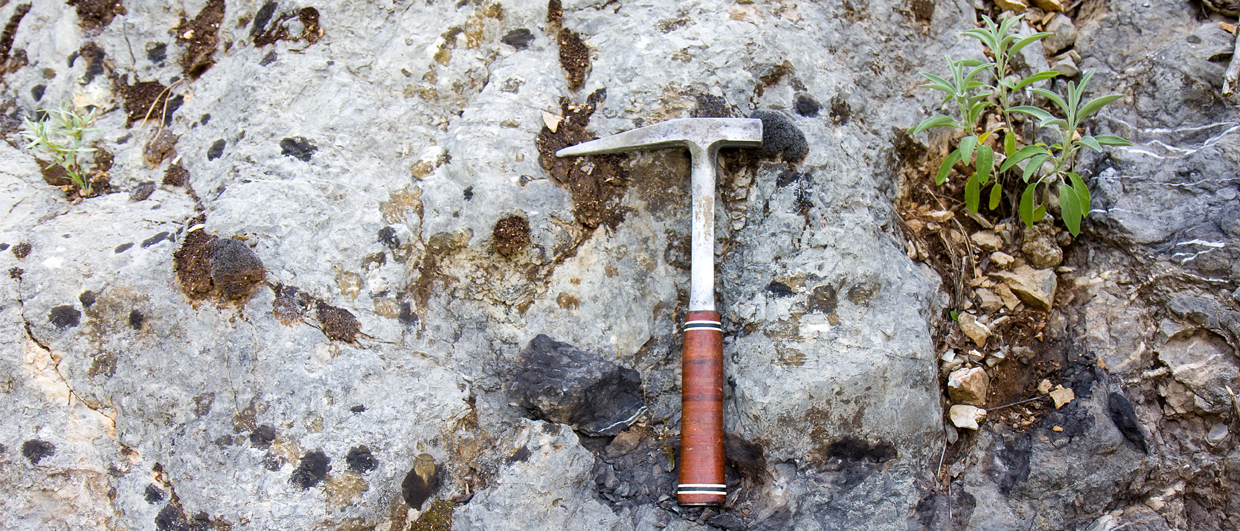GEO ExPro Oil & Gas Conference Round-Ups: AAPG Energy Transition Forum 2018
The Energy Transition Forum was held in the impressive Koepelkerk Conference centre; a former church with a beautiful copper-covered dome. Photo credit: Jane Whaley.
The recent AAPG Energy Transition Forum (Amsterdam September 5-6, 2018) resulted in two of the most stimulating days of discussion I have been privileged to witness. This was a new initiative by the AAPG, and the Forum’s ambitious title – A New Era for Geoscience – required a different style of debate from the organisation’s usual conferences – and also a different type of speaker.
The focus of the Forum was to consider, as lower-carbon technologies and new commercial models move us through the energy transition, whether and where the geoscientists of the future can play a part.
Prestigious Speakers
There were four themes to the conference, each with a half-day devoted to it, and each opening out of the discussions of the previous session – and each with an impressive line up of speakers and panellists.
Christiana Figueres, past Executive Secretary of the United Nations Framework Convention on Climate Change and a key architect of the Paris climate agreement, gave the opening address. Photo credit: AAPG.
The first morning set the scene by diving straight to the nub of the subject: the future of energy. Christiana Figueres, Executive Secretary of the United Nations Framework Convention on Climate Change (UNFCCC) from 2010 to 2016 and a key architect of the Paris climate agreement, made the keynote address. While she didn’t pull any punches in describing the world’s situation as she saw it (“the most important moment in human history”), she acknowledged that fossil fuels, and particularly gas, had an ongoing part to play in the transition, particularly in replacing coal. Similar themes were addressed by Lucia van Geuns from the Hague Centre for Strategic Studies, adding some sobering facts such as that although China is investing heavily in renewables, it will still be almost 50% dependent on coal for power in 2040.
Demonstrating the innovative nature of the Forum, the next speaker (and several others on the platform over the two days of discussion) was not from the E&P industry. Ivo Bozon, from the Global Insights Group in McKinsey and Company, reviewed the key challenges ahead for the energy industry. As many other speakers, he stressed the unpredictability of the future, citing several key tipping points which could disrupt the energy transition. Ashild Larsen from Equinor followed him with a discussion on how her company is approaching the transition and how digitalisation is an important aspect. The ensuing panel and audience discussion took these points further, with one speaker pointing out that many of today’s industry educators do not feel well equipped for teaching tomorrow’s geoscientists.
Sustainability in Oil and Gas
Denise Cox, AAPG President, and Max Brouwers from Shell opening the Forum. Photo credit: AAPG.
The afternoon session of the first day was dedicated to sustainability, introduced by talks from a panel consisting of two representatives of E&P companies and two from alternative energy organisations. This panel showed how unusual this whole event was in many ways: all the speakers were women, the first time I’ve seen that in my many years of conference attendance!
They discussed how geoscience will play a vital part in a sustainable energy industry going forward, both in traditional exploration and in renewable scenarios.
To increase our understanding of various aspects of alternative energy sources, the first day was rounded off by a ‘rotating’ series of presentations, where delegates were able to spend time with experts at each table discussing topics such as carbon capture, sustainable (i.e. man-made) minerals solutions, and lithium extraction and availability – vital to our everyday lives in things like phones, computers, and also in electric cars.
An all-female line-up on the podium! Photo credit: AAPG.
One of the things I noted about this conference was the way in which the discussions between participants continued throughout the day, through coffee breaks and lunch, as well as in the panel and audience discussions held after several sessions.
The presentations captured the imaginations and for many of us, even though we have heard discussion of ‘the energy transition’, it was the first time we really thought in detail about the breadth of the topic and its ramifications. In fact, at the end of the first day, with debates still going on all round the room, the delegates had to be persuaded to leave!
Digitisation and Collaboration in The Energy Industry
The next morning was dedicated to one of the important factors in this new era of geoscience – digitalisation. This was once again introduced by a non O&G industry speaker – Luq Niazi from IBM, who gave a fascinating talk on the power of digital transformation and how it is already a major disrupter in the industry. He gave examples of the use of AI in O&G, such as improving our ability to accurately locate the ‘sweet spot’, stressing that the industry needs to be harnessing and building on machine learning tools. Following him, Lindsey Lomas from Schlumberger demonstrated how they are doing just that, working closely with many companies, both within the O&G industry and outside, to develop new tools and workflows. One of the main take-outs from all the discussion is how collaborative we have become; according to Lindsey, Schlumberger are working with more than 500 companies. As was noted in the ensuing panel discussion, digitalisation is disrupting every part of the industry, not just the technical side. The whole system of tendering for projects and work may change, as companies seek partners who can participate and offer new ideas, rather than just contractors.
Arno van der Haak, , Global Head, World Wide Business Development Oil and Gas, AWS, with AAPG President Denise Cox and GEO ExPro Editor in Chief, Jane Whaley. Photo credit: Jane Whaley.
Another very interesting talk from an ‘outsider’ was delivered by Arno van den Haak from AWS (Amazon Web Services). Explaining how Amazon, through AWS, is powering many data-hungry companies, he talked about how the energy industry is being revolutionised by the combination of the ability to process vast quantities of data, combined with machine learning to help us work in different ways. What do you think about the idea of talking to a version of the famous ‘Alexa’, who has knowledge of local geopolitical and weather situation, to find out if a bottleneck in supply is anticipated?
This talk from one of the ‘tech giants’ was balanced by a presentation, no less fascinating, by Adrian Smith from relatively recent ‘start-up’ Sharp Reflections. He explained how even a small new company requires access to big computing power to process the vast quantities of seismic data now being gathered, and how use of Cloud solutions and working with partners like AWS and Google can allow a small organisation to thrive. His main point was back to collaboration – don’t try to reinvent the wheel!
Innovative Concepts
There is not much point in talking about the future if you don’t include the young professionals who will be that future! It was therefore refreshing to discover that, in addition to sponsoring a number of students to attend the Forum, there was considerable input from the younger generation, in both the planning and running of the event. The organising committee, which was very ably led by Max Brouwers (read about Max’s ideas behind the Forum here), was ‘shadowed’ by a committee of young professional geoscientists, some of whom took part in a panel session, explaining how they envisioned their future careers, while others hosted the main speaker sessions.
One of the young delegates, Clairet Guerra, a Ph.D. Candidate in Reservoir Geomechanics from the Technische Universität Darmstadt, told me her reaction to attending the Forum:
“The AAPG Energy Transition Forum opened the door for technical and visionary discussions addressing the role of digitalization, alongside geoscientists, in the road to a clean energy world. I was left beyond excited with the multiple career paths I may follow and the opportunities that lie within the digital energy revolution. Industry experts, scientists and students were encouraged to learn and implement the new technologies and to gain interdisciplinary knowledge in order to become integral and resilient professionals. It was uplifting to see that, as geoscientists, we are key players in the transition towards eco-friendly and sustainable energy generation.”
A ‘virtual’ TED-style talk given by Professor Iain Stewart of Plymouth University. Photo credit: AAPG.
As one of the older attendees, I really enjoyed getting the chance to talk to some of these young people and hear their career aspirations. The industry is in safe hands, even if their careers will look very different to ours.
Another innovative feature was a series of short ‘TED’-style talks: 15 minutes of rapid inspiration based around the theme of ‘new skills and new ways of thinking’. The excellent presenters ranged from Lindy Elkins-Tanton, an astrogeologist leading a NASA project, to Mark Killien, External Relations for Shell, who gave us a very energised talk on effective communication. Another speaker from IBM introduced the concept of ‘Design Thinking’ and the event was rounded off with an interactive breakout session on this, which all delegates found very stimulating.
The Future of Geoscience
There were many ‘takeaways’ from the Energy Transition Forum. One was the importance of doing things differently, ably demonstrated by the different formats and range of presenters over the two days, so huge congratulations to the AAPG, led by President Denise Cox, and to the organising committee for running the event and I hope there will be more like it, discussing these ideas which are so vital for our future planet.
The Design Thinking workshop was led by IBM. Photo credit: AAPG.
To summarise: the first day emphasised the importance of geoscience and exploration companies in the energy future as we transition to a low carbon future, but also that they must engage with this transition, both individually and corporately; while the second day assured us that there is no need to fear that digitalisation and AI will replace the geoscientist, but will instead remove some of the tedium of the job; machines should enhance decision-making so the human can be more productive. As a representative from IBM said: “[Australian exploration company] Woodside taught Watson [IBM’s deep learning machine] to think like an engineer; Watson taught Woodside to think like 1,000 engineers”.
So is there still a future in the energy business for geoscientists? The consensus from this event is that there is, both in continuing fossil fuel exploration and by using geoscientists’ many transferable skills in other areas, like enhanced data management and searching for the rare materials like cobalt and lithium which will be needed in the renewables industry.
There will also be many people in the future working as geoscientists employed in ways that we, at the moment, have no understanding of; as one speaker pointed out, 65% of today’s primary school kids will end up with jobs that do not even exist at the moment.
Further Reading Relating to this Content
A Road Map for the Future of Geoscience
by Jane Whaley
The world is changing, and the energy industry needs to change with it. Q&A with Max Brouwers, VP Europe, Russia and Caspian for Shell.
This article appeared in August, 2018
What Is Geology?
by Jane Whaley
Geoscientists do not seem to be able to inspire other people with enthusiasm for their subject. What can be done about this?
This article appeared in Vol. 14, No. 1 – 2017
President-Elect of the AAPG: Denise Cox
by Jane Whaley
Denise Cox, President of Storm Energy and President-Elect of the AAPG, loves geology and wants to let a global audience understand more about the role of geoscience in energy solutions.
This article appeared in Vol. 15, No. 2 – 2018





